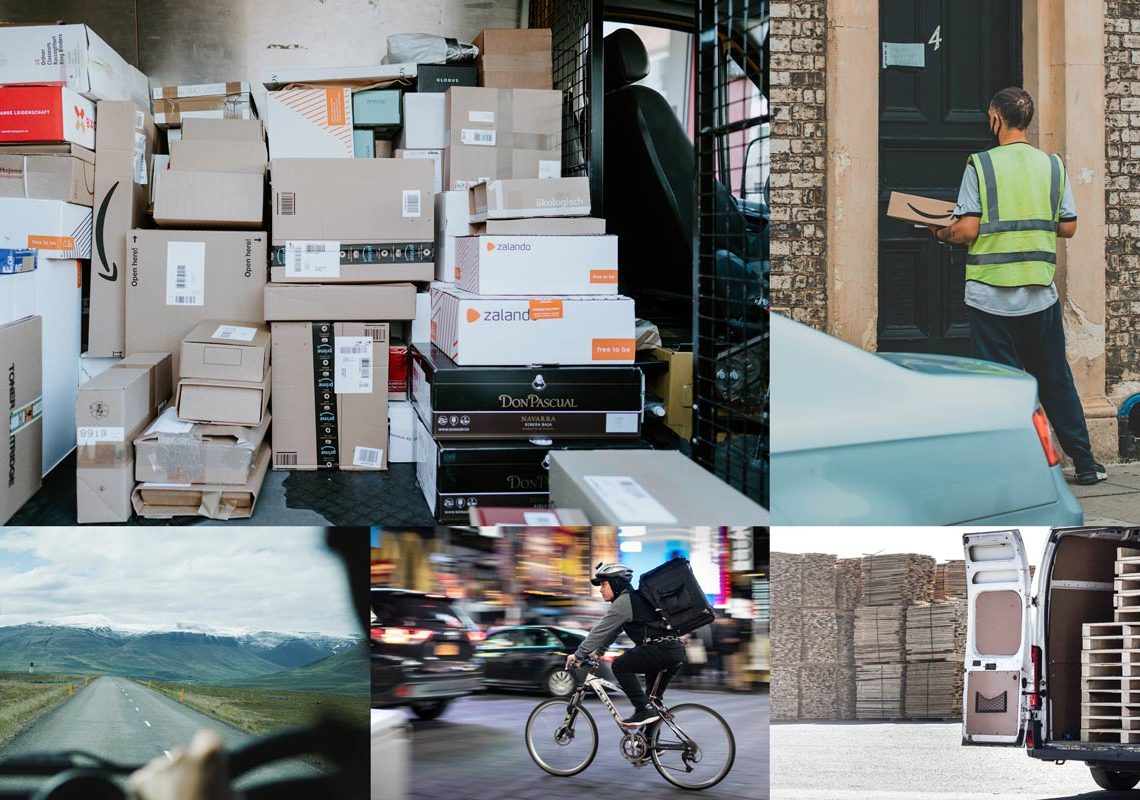One of the greatest things about becoming a self-employed courier driver is that you have the freedom to run your business however you want. There’s no answering to anyone else – well, except your customers of course – and you get to set your own hours.
So, if the thought of spending your days on the road while making money sounds like your kind of dream job then keep reading to find out how you can become a courier driver and succeed as your own boss.
Here are our top tips for how to become a freelance courier driver and watch your job satisfaction levels go from 0-100mph in eight simple steps…
Get a vehicle
If you want to become a successful courier driver, you first need to have a reliable vehicle. Your mode of transport doesn’t necessarily have to be a van. You could be a courier driver with a car, motorbike or even a bicycle. The choice depends on the type of courier driver you want to be.
If you’re based in the city centre, a bike might suit you well as you make small drops between various city-based businesses or making deliveries for city-based restaurants and coffee shops. Consider Deliveroo – they are a greatly successful bike-based courier service company. Whilst cycling around on your bike all day may not be the most lucrative way to make money, scaling up and having a fleet of courier cyclists could help you become a successful courier in the city.
Investing in a van, however, will open up the road to many more possibilities. As an owner driver courier with a van you will be able to travel a longer distance to pick-up jobs further afield and take larger (and more!) jobs on board. Before you choose your courier vehicle, weigh up the pros and cons first to make sure it’s the correct decision to pursue.
Whatever vehicle you choose to go for, make sure you go through the correct vehicle checks in order before you hit the road for your first job. From maintenance service to breakdown and recovery cover, insurance, MOT and car tax, you’ll want to make sure your vehicle is sound from the get-go.
Check what equipment you need
Once you’ve got the courier van (or bike or car!) sorted, it’s time to consider what other equipment you need before getting started.
One of the most important pieces of equipment you’ll need in your courier collection is a sat nav. The last thing you want to be doing as a courier is to be late to a job due to getting lost, hitting diversions or getting stuck in traffic.
Alongside a good quality sat nav system, you will also want to consider what equipment you’ll need to transport delivery goods. A sack truck, furniture trolleys and some secure ratchet straps, bungee cords and blankets will all help you to safely transport items with ease.
Consider your salary
Unlike being in traditional employment where you’re paid a set salary each month, being self-employed can often mean having a fluctuating paycheck every month. According to Talent, the average salary of a self-employed courier driver in the UK is £78,000 which equates to £40 per hour.
While you may not be making £78,000 in your first year as a courier driver, the entry-level rate is estimated as £24,375 and you have the possibility to scale your business up overtime. As with almost any self-employed career move, your salary will mostly depend on how many hours you are willing to put into your business. The longer you work, the more hours you travel and the more goods you transport will all help towards increasing your salary. There is, of course, always the prospect of hiring additional drivers and turning your one man and a van business into a courier fleet.
Register your company with HMRC
We know this step generally goes without saying. But if you are planning to go self-employed then make sure you do register your company with HMRC.
When registering with HMRC, you have the option of setting up as sole-trader or a limited company. Being a sole trader is the easiest route to take and requires little work upfront. However, setting up as a limited company can be more tax efficient than being a sole trader and ensures your business finances and personal finances are kept separate. So, it’s a good idea to compare the two options to determine what route would be best for you to take.
Know where to find courier jobs
Dipping your toes into the world of freelance can be daunting. So, making sure you have a steady stream of incoming work can help keep the self-employment fears at bay.
You can follow the old-school method of phoning local companies to see if they need any courier support. However, you may find the digital approach to be more successful. Social media can be a great way to get your name and business out there.
There is also a great number of courier exchange websites where you can list your courier services online in return for a membership fee. These courier exchange directories will allow you to search for available work, submit requests, and even hire vehicles from other courier companies. By staying up to date with available jobs on courier exchange websites you will soon be able to build up your reputation as a reliable and high-quality courier driver and start bringing in repeat work.
There is always the option of taking on some part-time courier work for another company whilst building your own customer base. You could look to become a courier driver for Amazon, or subcontracting for a larger courier company. Subcontracting can be a great way to ensure you have a reliable income whilst building your own self-employed courier business.
Invest in your business
When starting any type of self-employed business, it’s always important that you re-invest time and money back into your business. The same rule applies to being a courier. As tempting as it may be to pay yourself a comfortable salary every month, you could benefit more from investing some of that money back into your courier business.
By taking a sum of your monthly earnings and putting them towards growing your business, you will be able to ensure your courier driver business becomes a great success.
Some of the ways you can re-invest in your courier business includes advertising, website design, vehicle purchases or hiring additional drivers.
Consider your insurance needs
If you are going to become a freelance courier driver, it is important to ensure you have the right business and vehicle insurance protection. Your standard Social, Domestic and Pleasure (SDP) vehicle insurance won’t be suitable for providing you with legal cover as an owner driver courier.
Along with ensuring you have the correct commercial vehicle insurance as a courier driver, you will also need to make sure you have taken out business insurance cover. Public Liability cover will protect you against any damage or injury claims that are made against your business. You will also need Goods In Transit cover and a Hire and Reward policy to make sure your business is fully protected.
Think about qualifications
Finally, having relevant driver qualifications could help you stand out from the competition. Being on the road all day is different to commuting to and from work so it’s important to make sure you are confident, safe, and aware of the roads at all times.
Joining a professional body such as the National Courier and Despatch Association can provide customers with the assurances that you are a reliable and reputable courier driver, giving you a competitive advantage over other couriers applying for the same job.
While having a clean and full UK driving license is all you need to become a self-employed courier, you may need to take further driving tests if you want to operate larger vehicles. Make sure you’re familiar with the different driving license categories to make sure that you are covered to drive the vehicles in your courier fleet.
Taking the first step to become a self-employed courier driver is an exciting move to make. By following these eight simple stages, you can ensure you set off in the right gear to driving your self-employed courier business to success. If you need any additional support in ensuring the success of your courier business, be sure to check out our resources area, FAQs or drop us an email to enquire about the other ways we can help you.

